▶ Commentary
▶ By K. W. Lee
That was the year before South Central LA and the adjoining Koreatown burned and choked for four consecutive days and nights.
Today’s LA Koreatown is like, as an old Korean saying goes, woomul-annae-gaegori “frogs in the well” gleefully oblivious to the gathering dark storm above. How easily people of Hahn-Pulli forget.
That sinking feeling of déją vu hits you in the pit of your stomach.
Eight years later, merrily and riotously the frogs-in-the-well good times roll on at least on the surface, although the bulk of our fellow immigrants are stoically engaged in their dawn-to-midnight Sisyphean existence as subterranean survivors.
Shouting “the fire next time” is like whispering in the wind, or shouting in the echoless chamber.
“These are fearful times,” the year-before-Sa-ee-gu editorial warned in the fiery aftermath of the Latasha Harlins tragedy. “Are the non-English speaking Korean settlements across the land prepared for another media-fanned racial fire?
“These volatile hours cry out for the best available resources the Korean community can mobilize to reverse the tide of fear and alienation and to build bridges of good will with the African American community.
“Yet the Korean American community continues to remain fragmented and isolated — without a consensus or direction.
“Throughout the country, there are thousands of American-educated professionals pursuing their careers in law, medicine, finance, education, science, art and government sectors, but only a few of them have volunteered to contribute to the interethnic bridge-building process critical to the very survival of the emerging immigrant community.”
The Day-After-the-Siege the front-page editorial spelled out what must be done to heal the wounds and prevent another Sa-ee-gu as 30,000 fellow countrymen and supporters marched along the still smoldering streets of Koreatown:
“These immediate tasks face us:
“Demand the prompt investigation in alleged civil rights violations involving Korean American merchants in the riot and elsewhere.
“Mobilize the best available resources such as lawyers, physicians, engineers, scientists and professors to help rebuild thousands of riot victims.
“Form a national Korean American anti-defamation league to help combat bigotry, hatred and ignorance in the mainstream media.
“Convene a national meeting of dedicated community leaders and activists to discuss short-range and long-range strategies in dealing with governments, African American and Hispanics and other Asian groups.
The LA riots dared the fragmented Korean America across this continent to wake up and act in unity. The immediate local response was full of promise. But the historical “hot-and-cold” and divisive syndrome inevitably popped its ugly head. Soon everything would be forgotten. And nothing of purpose and direction developed.
Throughout, conspicuous was the absence of the American-educated elites who number hundreds of thousands, when it came to life-threatening crises affecting non-English-speaking fellow immigrants in the tense urban centers. Except for the painfully familiar faces of a “Splendid Few” professionals who would share the burden of thankless bridge-building chores.
As I recall, at the height of the Korean bashing in LA, only one letter of protest by a Korean American appeared on the LA Times editorial page. That lone letter was penned by a UCLA student whose father ran a store in South Central LA.
Not surprisingly, a 1996 Los Angeles Human Relations Commission study was moved to observe: “Unlike those of Chinese descent, LA’s Korean community is ... considerably fractured. Consequently, it is difficult to develop leaders to speak for the Korean community as a whole....
“This lack of a strong, community-based mediating organization may be an important factor complicating relations between Koreans and the rest of Los Angeles.”
Since the “Never Again” editorial manifesto of 1992, the sun has long set on the 20th century.
And the first year of the new millennium is about to drift into the LA smog of merciful forgetfulness.
“The Fire Next Time?” It’s that déją vu time again.
A pioneer Asian American journalist and the former editor of The Korea Times English Edition, K.W. Lee has been invited again to lecture a course on “Investigative Journalism—Communities of Color: Exploring California Pacific Rim Mosaic” at UCLA this fall.
스마터리빙
more [ 건강]
[ 건강]이제 혈관 건강도 챙기자!
[현대해운]우리 눈에 보이지 않기 때문에 혈관 건강을 챙기는 것은 결코 쉽지 않은데요. 여러분은 혈관 건강을 유지하기 위해 어떤 노력을 하시나요?
 [ 건강]
[ 건강]내 몸이 건강해지는 과일궁합
 [ 라이프]
[ 라이프]벌레야 물럿거라! 천연 해충제 만들기
 [ 건강]
[ 건강]혈압 낮추는데 좋은 식품
[현대해운]혈관 건강은 주로 노화가 진행되면서 지켜야 할 문제라고 인식되어 왔습니다. 최근 생활 패턴과 식생활의 변화로 혈관의 노화 진행이 빨라지고
사람·사람들
more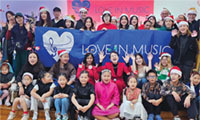
‘러브인뮤직’ 2025 성탄 음악회 성료
러브인뮤직은 지난 20일 LA 동양선교교회(담임 김지훈 목사)에서 가진 2025 성탄 작은 음악회를 끝으로 각 지역 봉사처별 올해 활동을 마무…
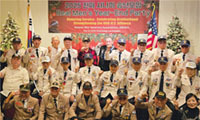
한인 향군 단체들 ‘진짜사나이’ 송년 행사
6·25 참전유공자회(회장 이재학)와 육군협회(회장 최만규)가 공동 주최한 2025 ‘진짜사나이’ 송년모임이 지난 19일 LA 용궁식당에서 한…
“취미생활로 다진 친목… 선후배들과 만든 모교사랑…
사진러브한인 사진 동호회 사진러브(회장 크리스 고)는 13일 용수산에서 송년모임을 갖고 한 해를 마무리하는 뜻깊은 시간을 가졌다. 이날 모임에…
[홀인원] 이상원 박사
일반외과 전문의 이상원(왼쪽) 박사가 지난 9일 뉴포트비치 소재 골프장 9번 홀(152야드)에서 레스큐 클럽으로 친 샷이 그대로 홀에 빨려 들…
[송년행사 게시판] 재미시인협회
재미시인협회(회장 지성심)는 오는 20일 오후 4시 가든스윗호텔에서 한 해를 마무리하며 동인지 ‘외지’ 제35집 출판 기념회와 ‘제23회 재미…
많이 본 기사
- 연말 ‘로드레이지’ 비극… 한인 총격 피살
- ICE 홈디포 급습단속에 한인 체포 2
- 성탄 연휴 폭우 ‘비상’ 주중 최대 6인치 온다
- 트럼프, 전 정부 임명 대사급 외교관 30여명 소환
- 17년차에 17개 수상으로 증명했다..국민 여동생, 국민 가수, ‘국민 배우’까지 ‘아이유 천하’
- ‘거액 탈세·통관 사기’ 한인 통관브로커 중형
- 트럼프, 그린란드 특사 임명…덴마크, “영토 존중” 반발
- 트럼프 친구 사업가의 골프장, 세계 분쟁종식협상 무대돼
- 트럼프행정부, 동부해안 5개 대형해상풍력단지에 해역임대 중단
- 운전중 시비 끝에 총 맞아 40대한인 사망
- CBS, ‘이민자 추방’ 관련 보도 취소… ‘트럼프 눈치보기’ 비판
- 맥도널드 주차장서 싸움 끝 총격
- 경찰, ‘여론조사비 대납의혹’ 이준석 무혐의… “추측성 진술뿐”
- 미주한인 이산가족 북한 고향 길 열려
- 여야, ‘통일교특검’ 각자 발의후 협의키로…특검후보 추천 쟁점
- 트럼프, 건강보험사들에 “보험료 내려… 1
- 애난데일 인근 I-495에서 28중 추돌사고, 8명 부상
- 연말 ‘로드레이지’ 비극… 한인 총격 피살
- 한국 화장품 1+1 등 성탄 특별세일
- “한국문화 계승 노력 이어간다”
- 로드아일랜드 디자인 학교 전액 장학생 합격
- 워싱턴코리안색소폰앙상블팀 송년모임
- “갈등·반목의 세상에 평화를…”
- ‘SNS 검증’에 비자심사 적체… “최대 12개월 지연”
- 재향군인회 미동부지회 송년모임
- ‘정치 손절’ 김흥국 “내년 선거 때 연락하지마..아들·딸 보기 부끄러워”
- “남의 묘비에 이름 새기는 것 같다”
- ‘재미 이산가족 상봉 지원법’ 트럼프 서명
- 말살되고 있는 유럽의 성탄절 전통, … 1
- 2026년을 기다리며… 타임스퀘어 벌써 새해맞이 분위기
- 빅애플 2025년 송년회
- 송미숙 뉴저지한인회장 당선자 후원의 밤
- ‘트럼프 골드 카드’ 1300명 이상 신청
- 미 자동차 업계… 전기차 접고 내연차로 회귀
- 올해 메릴랜드 교도소 수감자 약 70명 숨져
- 파워볼 로토 열풍 지속 오늘 잭팟 16억 달러로
- 냉장고 문짝 1초 만에 조립… ‘다크 팩토리’ 성큼
- 아픔 딛고 첫 대상후보.. ‘말자’ 김영희 “X밭 걷고 있다 생각했는데..”
- 사사세 워싱턴 송년회
- JGL 건설회사 송년회… 장학금 전달
- 한국해양대학미동부동문회 ‘2025 송년의 밤’
- 방탄소년단 정국, 또 자택 침입 피해로 몸살..50대 日 여성 경찰 입건
- 한인 최초 NASA 우주비행사 조니 김… “우주서 김치·밥 그리웠다”
- 관세로 준다던 미군 보너스 알고보니 ‘주택보조금’ 예산
- 뉴욕상춘회, 송년회
- 뉴욕시 합법 노점상 확대 조례안 통과⋯5년간 2만개 늘려
- 국토장관 “영주권 추첨제도 전격 중단”
- 오늘 동지… 한인타운서 동지팥죽 함께 나누기 행사
- 외로운 이웃들
- ‘1세대 연극 스타’ 윤석화 뇌종양 투병 69세로 별세
1/5지식톡

-
 ☝️해외에서도 가능한 한국어 선생님…
0
☝️해외에서도 가능한 한국어 선생님…
0이 영상 하나면 충분합니다!♥️상담신청문의♥️☝️ 문의 폭주로 '선착순 상담'만 진행합니다.☎️ : 02-6213-9094✨카카오톡ID : @GOODEDU77 (@골뱅이 꼭 붙여주셔야합니다…
-
 테슬라 자동차 시트커버 장착
0
테슬라 자동차 시트커버 장착
0테슬라 시트커버, 사놓고 아직 못 씌우셨죠?장착이 생각보다 쉽지 않습니다.20년 경력 전문가에게 맡기세요 — 깔끔하고 딱 맞게 장착해드립니다!장착비용:앞좌석: $40뒷좌석: $60앞·뒷좌석 …
-
 식당용 부탄가스
0
식당용 부탄가스
0식당용 부탄가스 홀세일 합니다 로스앤젤레스 다운타운 픽업 가능 안녕 하세요?강아지 & 고양이 모든 애완동물 / 반려동물 식품 & 모든 애완동물/반려동물 관련 제품들 전문적으로 홀세일/취급하는 회사 입니다 100% …
-
 ACSL 국제 컴퓨터 과학 대회, …
0
ACSL 국제 컴퓨터 과학 대회, …
0웹사이트 : www.eduspot.co.kr 카카오톡 상담하기 : https://pf.kakao.com/_BEQWxb블로그 : https://blog.naver.com/eduspotmain안녕하세요, 에듀스팟입니다…
-
 바디프렌드 안마의자 창고 리퍼브 세…
0
바디프렌드 안마의자 창고 리퍼브 세…
0거의 새제품급 리퍼브 안마의자 대방출 한다고 합니다!8월 23일(토)…24일(일) 단 이틀!특가 판매가Famille: $500 ~ $1,000Falcon: $1,500 ~ $2,500픽업 & 배송직접 픽업 가능LA…
케이타운 1번가
오피니언
 옥세철 논설위원
옥세철 논설위원말살되고 있는 유럽의 성탄절 전통, 그 원인은…

외로운 이웃들
 조지 F·윌 워싱턴포스트 칼럼니스트
조지 F·윌 워싱턴포스트 칼럼니스트 [조지 F. 윌 칼럼] MIT에 대한 트럼프의 무분별한 공격
 전지은 수필가
전지은 수필가 ‘소명’이라 알아듣고
 최문선 / 한국일보 논설위원
최문선 / 한국일보 논설위원[지평선] 쿠팡의 “한국말 몰라요”

잇단 총격·테러 음모… 한인타운 안전 우려

2025년, 성찰과 감사의 마무리를
 김인자 시인ㆍ수필가
김인자 시인ㆍ수필가 [금요단상] AI와 동거, 그 실체
 한영일 / 서울경제 논설위원
한영일 / 서울경제 논설위원[만화경] 웰다잉 인센티브
1/3지사별 뉴스

빅애플 2025년 송년회
빅애플(대표 여주영)은 지난 19일 퀸즈 베이사이드 소재 산수갑산2 연회장에서 2025년 송년회를 열고 회원들간 화합과 친목을 도모했다. 이날…
재미 한인이산가족 상봉 길 열렸다

미주한인 이산가족 북한 고향 길 열려
“그리워하면 언젠가 만나게 되는…” 노래 가사처럼 그리워하면 다시 만날 수 있을까. 재미한인이산가족들은 그렇게 그리워하며 반세기가 넘게 기다리…
워싱턴 메트로지역 5세이하 아동인구 20년새 1.8%⇩

연말 ‘로드레이지’ 비극… 한인 총격 피살
연말을 맞아 도로 위에서 순간적으로 벌어진 운전 중 시비가 40대 한인 가장의 총격 피살 비극으로 이어졌다. 워싱턴주 레이시 경찰국과 서스턴 …
엡스타인 파일 공개 다음날 트럼프 사진 삭제…야당서 탄핵 경고

오늘 하루 이 창 열지 않음 닫기 




























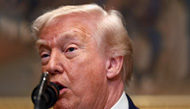





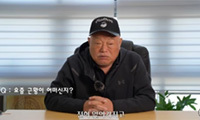
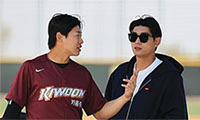
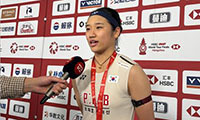














.png)


댓글 안에 당신의 성숙함도 담아 주세요.
'오늘의 한마디'는 기사에 대하여 자신의 생각을 말하고 남의 생각을 들으며 서로 다양한 의견을 나누는 공간입니다. 그러나 간혹 불건전한 내용을 올리시는 분들이 계셔서 건전한 인터넷문화 정착을 위해 아래와 같은 운영원칙을 적용합니다.
자체 모니터링을 통해 아래에 해당하는 내용이 포함된 댓글이 발견되면 예고없이 삭제 조치를 하겠습니다.
불건전한 댓글을 올리거나, 이름에 비속어 및 상대방의 불쾌감을 주는 단어를 사용, 유명인 또는 특정 일반인을 사칭하는 경우 이용에 대한 차단 제재를 받을 수 있습니다. 차단될 경우, 일주일간 댓글을 달수 없게 됩니다.
명예훼손, 개인정보 유출, 욕설 등 법률에 위반되는 댓글은 관계 법령에 의거 민형사상 처벌을 받을 수 있으니 이용에 주의를 부탁드립니다.
Close
x